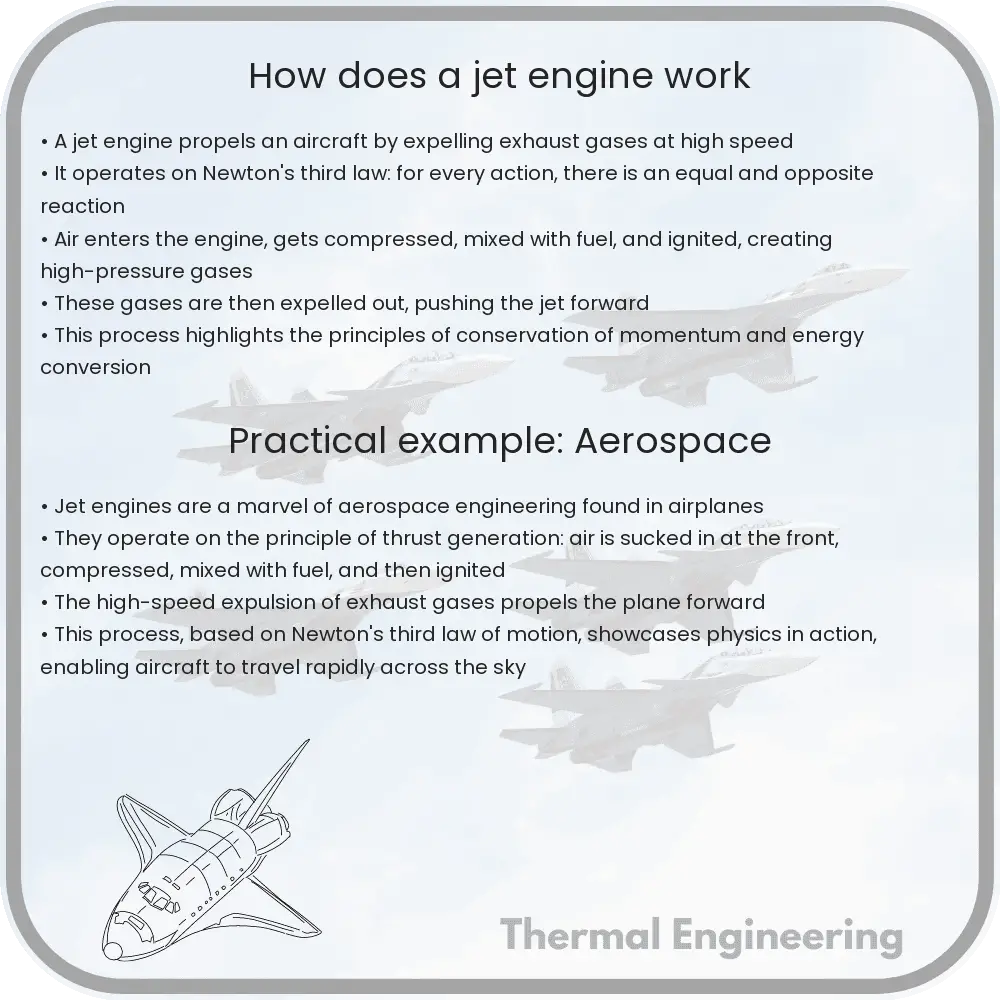Learn how jet engines function as the key drivers of modern aviation, from basic operations to advanced technological improvements.

Understanding Jet Engines: The Power Behind Modern Aviation
Jet engines are at the heart of modern aviation, propelling everything from commercial airliners to military fighters across the sky. Despite their complexity, the basic principle behind how a jet engine works can be understood by examining their core functions and components.
The Basics of Jet Engine Operation
A jet engine operates on the principle of Newton’s Third Law of Motion: “For every action, there is an equal and opposite reaction. Air is sucked in at the front, compressed, mixed with fuel, ignited and then blasted out at the back, propelling the aircraft forward.
Key Components of a Jet Engine
- Intake – Air enters the engine through an intake, which is designed to direct the flow of air into the engine efficiently while minimizing drag.
- Compressor – The compressor increases the pressure of the incoming air, preparing it to mix with fuel for combustion. Compressors are typically made up of multiple stages of small, rotating blades.
- Combustor – In this chamber, the high-pressure air mixes with fuel, usually jet fuel, and is ignited. The combustion significantly increases the temperature and energy of the gas.
- Turbine – The high-energy gas then flows through the turbine, which extracts some of this energy to drive the compressor and other accessories attached to the engine.
- Exhaust – The heated, high-pressure gas exits the engine through the exhaust, creating thrust as it escapes. This is the action that results in a reaction that pushes the jet forward.
The Physics of Jet Propulsion
The thrust generating process in a jet engine can be understood through the fundamental equation of momentum in fluids:
Force = Mass flow rate * (Exit velocity – Entry velocity)
In the context of a jet engine, as air moves through the engine, it is compressed, mixed with fuel, ignited, and then expelled at a higher velocity than when it entered. This increase in velocity results in a jet of exhaust gases shooting backward, propelling the engine, and therefore the aircraft, forward.
Types of Jet Engines
There are several types of jet engines, adapted for different purposes:
- Turbojet – The simplest type of jet engine, with all engine components aligned in a straight line. Ideal for high-speed aircraft at high altitudes.
- Turbofan – Most common in commercial airliners, turbofans have a fan at the front that forces cold air around the outside of the combustion chamber, producing additional thrust and improving efficiency.
- Turboprop – These engines use a gas turbine to drive a propeller, making them efficient at lower speeds and suitable for smaller aircraft like commuters and transport planes.
- Turbo shaft – Similar to turboprops, turboshaft engines are primarily used in helicopters, driving the rotor blades rather than a prop.
Advancements in Jet Engine Technology
Recent advancements in jet engine technology often focus on improving efficiency and reducing emissions. Manufacturers are developing engines with higher bypass ratios and better thermal efficiencies. Innovations like noise-reducing technologies and the use of sustainable aviation fuels are also becoming more prevalent, driven by global demands for environmentally friendly air travel.
Conclusion
Jet engines are marvels of engineering that combine aerodynamics, thermodynamics, and mechanical design to create the thrust needed for flight. Understanding how these engines work not only gives us insight into a crucial aspect of modern transportation but also illuminates the ways in which physics and engineering converge to solve complex, real-world challenges.
By grasping the fundamental principles behind jet engines, we can appreciate the scientific ingenuity and technological advancements that allow us to soar above the clouds.